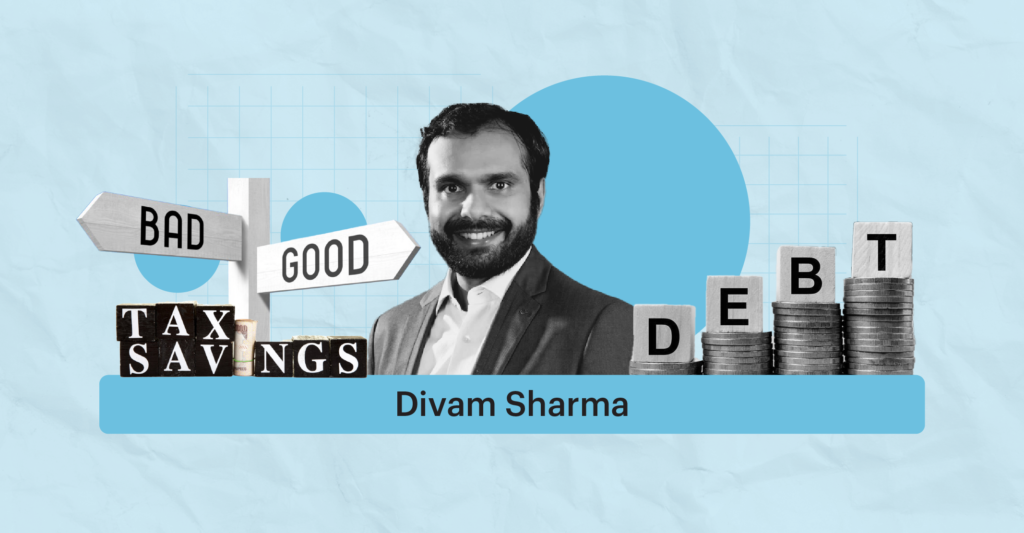Last Updated on Dec 12, 2022 by Anjali Chourasiya
There is this misconception about the company’s capital structure that a large proportion of debt brings down its liquidity and solvency position. Well, this is true, but it isn’t entirely true. If you’re an analyst figuring out what should be the optimal structure of capital and if the debt is a good or a bad thing, this article is for you.
Table of Contents
Debt financing in a nutshell
Before listing down the pros and cons of having debt, let us walk through why companies go for debt and if it should be a preferred source of capital.
Debt financing involves borrowing money, whereas equity financing refers to raising money without diluting your stake. Whereas payment and interest are obligatory in debt financing, this is not the case in equity capital. But here is a catch. While ownership of the business that you’ve made from scratch is self-satisfactory, debt does not take that away from you. Hence, one of the main reasons why debt is a preferred source of capital.
Debt can save tax
Debt can help you “save taxes”. Yes, you heard it right. The interest you pay on corporate debt is tax deductible which helps you reduce your taxable income, hence reducing tax liability.
Troubles with debt
We have talked enough about debt over equity. But choosing debt comes with its own set of difficulties. Every coin has two sides, and so does choosing debt.
High-interest costs during difficult financial periods can increase the risk of stress on financials. Companies that are too highly leveraged (that have large amounts of debt as compared to equity) often find it difficult to grow because of the high cost of servicing the debt and also face a chance of insolvency when the tide turns.
Moreover, companies with a less stable flow of cash find it difficult to make timely payments for a debt.
Debt-to-Equity ratio
As a core research house, we look into various parameters before finally feeling confident about the company. One of those parameters is the Debt to Equity ratio.
Calculated as Debt/Equity, this ratio tells us the proportion of debt and equity in the capital structure. The higher the ratio, the riskiest it is.
Beyond this, one should also look at metrics like interest coverage, the credit rating of debt, historical trends of leverage and debt servicing, and industry comparable on Debt parameters.
If you talk about the cost of capital, the cost of debt may range from 5-15% (average 10%), while the expected cost of capital for equity is 15-20%. So, equity might end up being more expensive for the business.
All debt is bad debt?
That’s all about the advantages and disadvantages of debt. Coming back to our topic, if ‘All Debt is a Bad Debt’?
Let us assume you’re an analyst looking to add some quality stocks to your personal portfolio. You come across a company XYZ Ltd, a subsidiary of ABC ltd. After reviewing all the reports, you realise that the company has a high debt-to-equity ratio. You compare it with its peers, and you’re taken aback by the huge difference. But diving deep into the books, you infer
- The company has the majority of the loan from its parent company.
- The company is doing necessary capex to be funded through debt.
- The company has positive Free Cash Flow.
Is debt a bad thing in the aforementioned cases? The answer is clearly a “no”.
XYZ is spending on capital expenditure which has the potential to double the revenues. In this case, the opportunity cost of not doing the capex is higher. Moreover, the company has free cash flow, implying it still has cash available after working capital, and fixed asset expenses have been taken care of.
Although, we would also say that this depends on case to case basis – on the industry strength, growth opportunities and funding alternatives. Another eye-catching thing is that the majority of the loan is from the parent company, which means it has strong financial assistance from ABC ltd.
We can infer from the above example that it isn’t necessary if there is a high amount of debt in a company’s balance sheet, then it’s less liquid or solvency. Obviously, it affects its solvency, but the extent has to be known by the reason for the company taking debt.
Make it a good debt
Debt can be used to finance a wide variety of business activities, including working capital (to acquire inventory, for example), capital expenditures (such as to finance equipment purchases) and acquisitions of other companies, to name a few.
A broad universe of lenders specialises in various industries, stages of business and types of assets. You must have your finances clearly planned to make it a ‘Good Debt’. Because if not paid, lenders can take your company to insolvency. Debt covenants are another thing to be taken care of while borrowing.
The nature of the requirement of funds should also determine whether it should be funded by Debt or Equity. Say a long-term capex requirement should not be funded by short-term Debt.
To conclude
The bottom line of this is debt has two extreme options. If invested properly, it can take your business to new heights. But if underestimated, it can cause your company financial stress. You need to find a middle ground to generate enough cash to pay lenders in time, put this money into the most useful thing, and bring your company to profitability and growth. Debt can even act as a momentum of growth if used in the right place at the right time.
This article is written by Divam Sharma, Founder and CEO of Green Portfolio and a former analyst at CitiBank, IMGC, and Kotak Mahindra Bank. Check out Green Portfolio’s smallcases.
- New Age Companies, Blessing in Disguise? - Dec 20, 2022
- All Debt Is Not Bad Debt - Dec 12, 2022
- Investments That Can Help During Inflation - Nov 15, 2022




